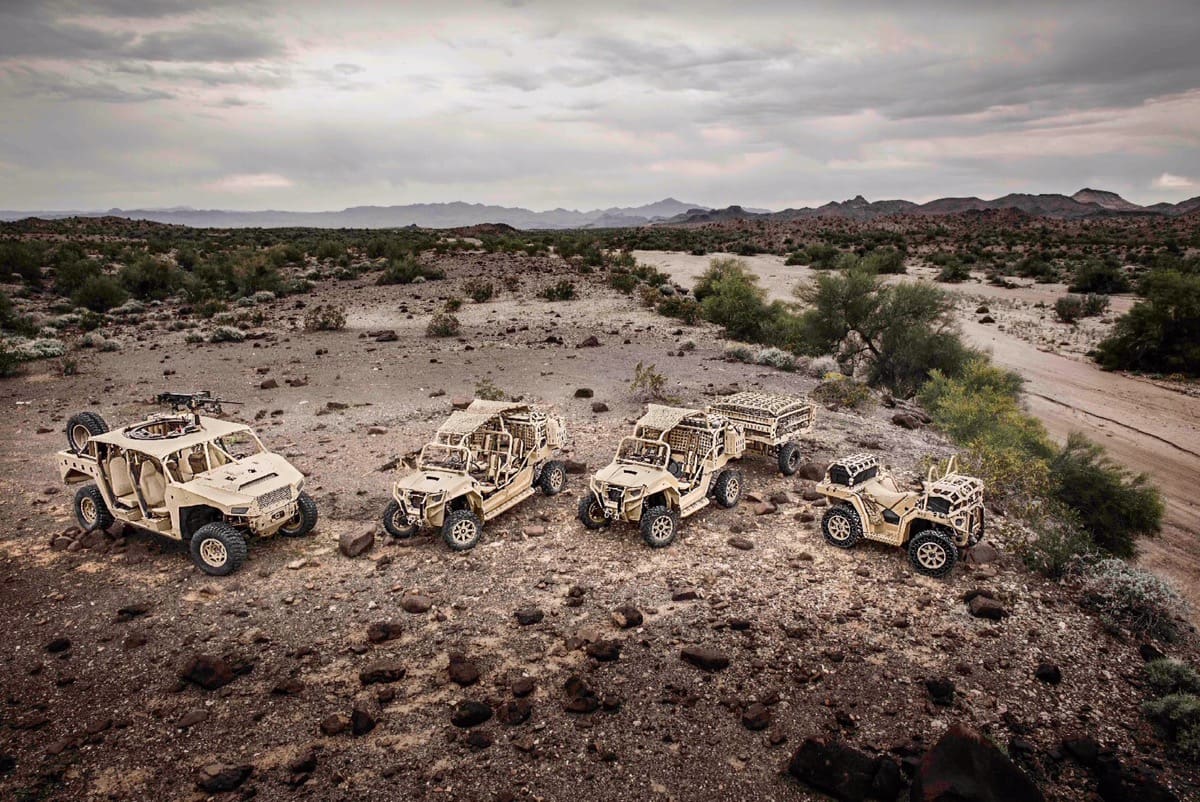MINNEAPOLIS (October 13, 2016) — General David Perkins, the commanding general of the U.S. Army Training and Doctrine Command (TRADOC) and members of his staff visited Polaris on Wednesday. Gen. Perkins received product and technology demonstrations at the company’s state-of-the-art engineering and product development center in Wyoming, Minn. The trip is part of the TRADOC commander’s broad benchmarking initiative focused on innovative businesses to identify and support best practices necessary to drive evolution of Army procurement, operations, and engagement.
“As the architect of the Army, TRADOC is tasked with envisioning the future environment so as to identify capability gaps, analyze potential solutions and then determine requirements,” said Gen. Perkins. “Our stop at Polaris is one of many that will help us gain better insight into the rapid technology development and agile supportability paradigms in commercial enterprise, including focused innovation and insertion into applications relevant for the next generation of warfare.”
“At AUSA last week, we showcased our family of ultralight, off-road military vehicles – the best of what’s available today in enhanced tactical mobility – and the tremendous advantage in tactical and strategic mobility they bring to today’s military operations,” said John Olson, PhD, vice president and general manager of Polaris Defense. “Yesterday, we were given the opportunity to fast-forward and show Gen. Perkins and his staff a glimpse at how we leverage our 60 years of off-road vehicle experience to rapidly and affordability develop, test, and deliver the technology and vehicles needed to meet – at the speed of need – the evolving, challenging demands of the nation’s warfighters in the years and decades to come.”
The Polaris Product Development Center opened in Wyoming, Minn., in April 2005. In addition to military technology and advanced vehicle development, the approximately 300,000 square foot facility houses research and development of Victory Motorcycles, all-terrain vehicles (ATV), RANGER utility vehicles, and Polaris Engines. Capabilities include world-class prototype fabrication and assembly capabilities, laboratories for structural testing, electrical development, materials engineering, and powertrain assembly and dynamometer testing. It also was one of the first facilities to achieve Leadership in Energy and Environmental Design (LEED) certification, created by the United States Green Building Council.
Polaris Defense vehicles deliver a coveted combination of deployability, versatility and off-road mobility, forged from more than 60 years of off-road vehicle experience that is simply unmatched. Vehicles include the rugged Sportsman MV 850, the modular and nimble MRZR, and the flagship DAGOR, which expands upon the range, payload and off-road mobility of any previous tactical light off-road vehicle. The enhanced tactical mobility provided by Polaris Defense gives an advantage back to dismounted troops, allowing formations to move faster, carry more and significantly reduce combat fatigue. Polaris service and support is scalable worldwide and includes military vehicle training, service and maintenance. It also can be supplemented internationally through the Polaris network of distributors, building on the global strength of the Polaris commercial enterprise. And because Polaris vehicles are in service throughout the world, there is a high degree of interoperability and commonality among U.S. and allied forces.
Tags: Polaris



I heard the army is making a Polaris-W2 because it doesn’t want Polaris to pay the guy that puts air in the tires
Uh oh… Do I see an Army Times article about kickbacks in someones future??
Probably not, but I’m sure he will have a job on the board of directors at Polaris after EAS.
If a guy were to create a .gov solution that took business away from a company, they most certainly aren’t going to hire him. Can you imagine Caleb Crye hiring Bob Mortlock?